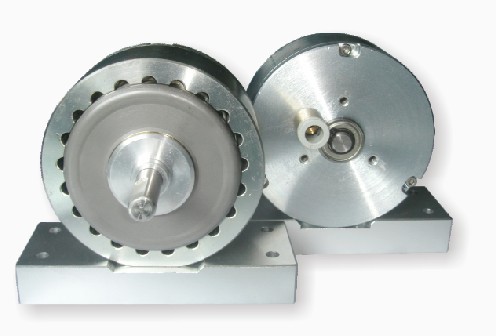In the high-stakes world of mask manufacturing, where microns matter and precision defines profitability, one unsung hero quietly powers the backbone of flawless production: tension control systems. While most industry conversations revolve around raw materials or automation speeds, savvy manufacturers know that mastering tension control is the secret sauce to unlocking consistency, minimizing waste, and outmaneuvering competitors. Let’s pull back the curtain on this critical technology and explore why next-gen tension control deserves a standing ovation in your production line.
THE SILENT CRISIS IN MASK PRODUCTION (AND HOW TO FIX IT)
Walk through any mask manufacturing facility, and you’ll hear the same pain points whispered between engineers:
- Material slippage causing misaligned layers
- Inconsistent tension leading to uneven pleating
- Snapbacks creating microscopic tears in melt-blown fabric
- Tension spikes jamming high-speed assembly lines
These aren’t just operational nuisances—they’re profit leaks that drain 6-8% of potential revenue through rework and material waste. Traditional tension control systems, designed for simpler times, now struggle to keep pace with modern demands for ultrafine surgical masks and breathable N95 variants requiring 5-layer precision.
ENTER THE TENSION CONTROL REVOLUTION
Modern tension control systems have evolved into sophisticated neural networks for production lines, combining hardware precision with AI-driven adaptability. Here’s what sets them apart:
1. MICRO-TENSION ADJUSTMENT TECHNOLOGY
Unlike crude spring-loaded systems, advanced regulators can detect tension variations as subtle as 0.01 Newtons—equivalent to sensing a housefly’s landing on the material web. This nano-scale control prevents the “accordion effect” in delicate non-woven fabrics while maintaining surgical-grade consistency across 24/7 operations.
2. SELF- servo press PRESSURE PROFILES
Smart systems analyze production patterns across shifts, automatically creating optimized tension curves for:
• Different material roll diameters
• Humidity fluctuations
• Speed transitions during batch changes
• Specialty materials like nanofiber composites
3. COLLISION AVOIDANCE SYSTEMS
Integrated sensors create a “safety bubble” around material webs, predicting and preventing:
➔ Edge curling on hydrophilic layers
➔ Telescoping during rapid deceleration
➔ Micro-tears from sudden torque changes
CASE STUDY: BREATHING NEW LIFE INTO A LEGACY MANUFACTURER
Consider the transformation at ShieldFlex Medical (name changed), a 40-year-old mask producer struggling with 12% scrap rates on KN95 lines:
BEFORE TENSION UPGRADE
► 8 emergency stops per shift

► 15% material overuse
► 5% dimensional inconsistency
AFTER IMPLEMENTING DYNAMIC TENSION CONTROL
▼ 72% reduction in unplanned downtime
▼ 9:1 ROI within 8 months
▲ 22% increase in OEE (Overall Equipment Effectiveness)
“It’s like our machines grew a sixth sense,” notes their production VP. “The system anticipates issues before our operators notice them.”
BEYOND BASICS: SPECIALIZED TENSION STRATEGIES
Different mask components demand tailored approaches:
EARLOOP ASSEMBLY ZONE
Precision tensioning prevents:
✓ Elastic strand overstretching
✓ Inconsistent loop elasticity
✓ Ultrasonic welding misfires
NOSEBRIDGE INTEGRATION STAGE
Pressure modulation ensures:
✓ Accurate metal strip embedding
✓ No fiber displacement
✓ Consistent nose seal integrity
FOLDING \u0026 PLEATING SECTION
Active damping controls eliminate:
✓ Asymmetric pleat patterns
✓ Layer separation
✓ Static charge buildup
FUTURE-PROOFING YOUR TENSION CONTROL
As mask technology evolves, so do tension demands:
EMERGING REQUIREMENTS
• Handling graphene-infused antiviral layers
• Managing conductive materials for smart masks
• Accommodating biodegradable PLA substrates
INDUSTRY 4.0 INTEGRATION
Modern systems now offer:
→ IoT-enabled remote calibration
→ Digital twin simulations
→ Predictive maintenance alerts
→ ERP system integration for real-time KPI tracking
THE COST OF COMPLACENCY
Sticking with outdated tension control isn’t just about lost productivity—it risks:
◉ Failing stringent FDA/EU medical device certifications
◉ Inability to process next-gen materials
◉ Escalating maintenance costs on balky legacy systems
CHOOSING YOUR TENSION CONTROL PARTNER
When evaluating systems, demand:
✔ Material-agnostic adaptability
✔ \u003c0.5ms response time
✔ Seamless integration with existing PLCs
✔ Cybersecurity-protected software
✔ Vendor-supported AI training
WHY THIS MATTERS NOW MORE THAN EVER
With global mask demand projected to sustain 6.4% CAGR through 2030, manufacturers face a critical juncture: upgrade tension systems to capture premium contracts or risk becoming cost-driven commodity producers. The difference lies in achieving that elusive blend of micron-level precision and production-floor robustness.
YOUR NEXT MOVE
The tension control revolution won’t wait. Whether you’re running classic surgical lines or pioneering antiviral nanomask production, the right tension technology transforms your machines from blind workhorses into thinking partners. The question isn’t whether to upgrade—it’s how quickly you can implement solutions that grow smarter with every meter of material processed.
Ready to eliminate tension-related defects for good? The path to zero-waste mask production starts with one conversation. Let’s discuss how to future-proof your tension control strategy today—before your competitors beat you to the next efficiency frontier. 🏭💡
